After a very strong start at the first two EWS rounds, the 2017 season looks very promising for young Scottish racer, Lewis Buchanan. We catch up with the Trek Factory Racing team rider to see how he sets up his Trek Slash RSL.
Being a Trek Factory Racer, Lewis has two identical bikes, this one, his training bike is what he uses day to day, but he also has an identical bike which is kept under lock and key at the Trek HQ in the US. His race bike is flown out to races with the team mechanic and prepped to be sure it’s in tip-top condition. Lewis also takes his practice bike in case of any big problems with the race bike.
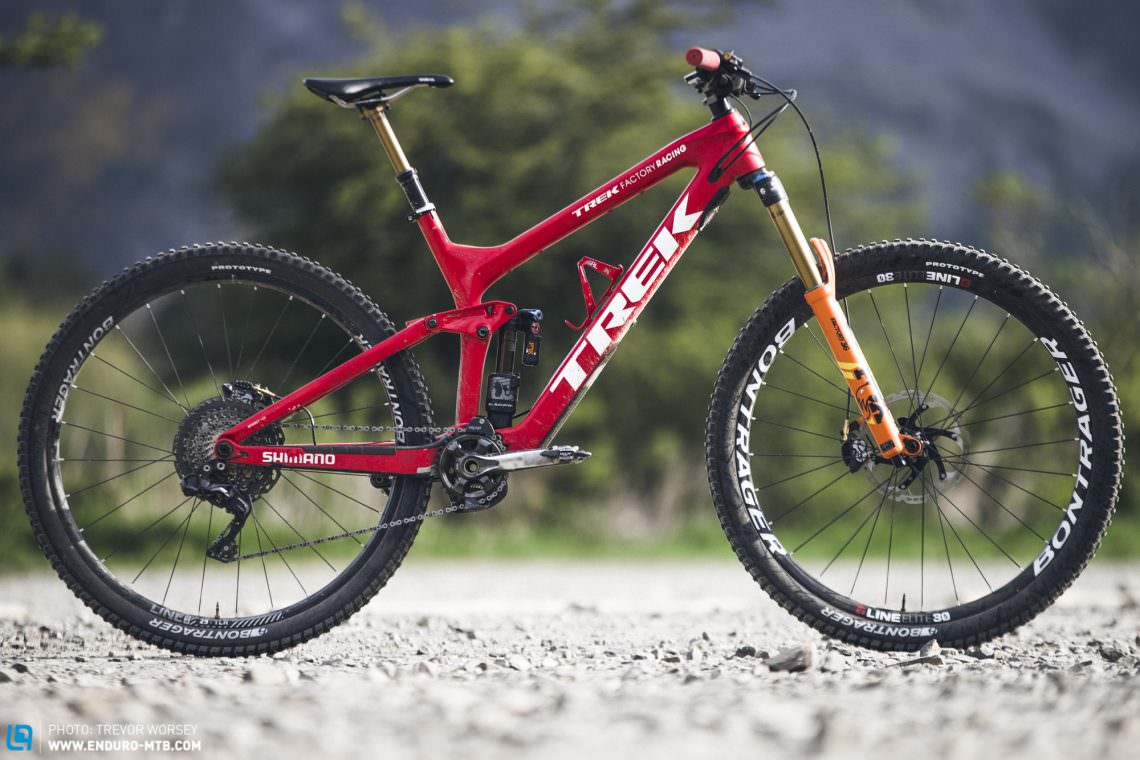
Throw out the anchor
In testimony to the high speeds of the 29er Slash, Lewis chooses to run powerful Shimano Saint brakes, one of the most aggressive on the market. Paired with 203 mm rotors front and rear he has some serious stopping power. “This is a bigger setup than I used to run on the 27.5 bikes, but for me, stepping up to 29-inch wheels had allowed me to push the speeds to the next level and now I like the bigger brakes”. Lewis runs standard sintered pads in the brakes and has them set to pull equally front and back, with the bite point around 2.5 cm from the bar.

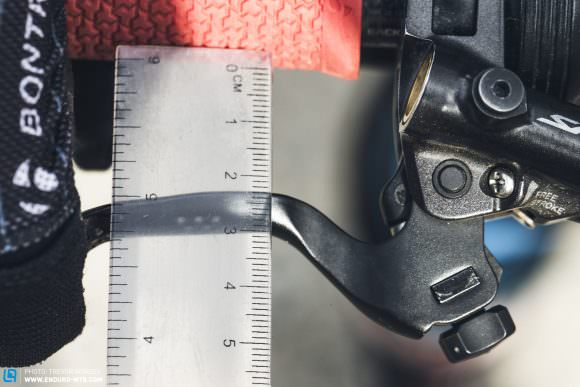
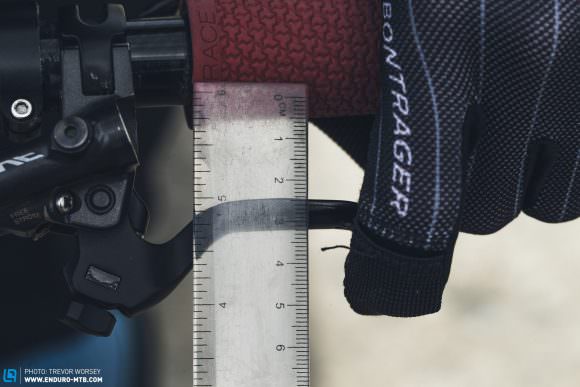
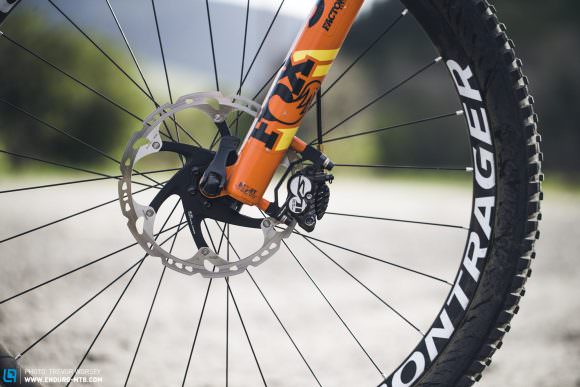
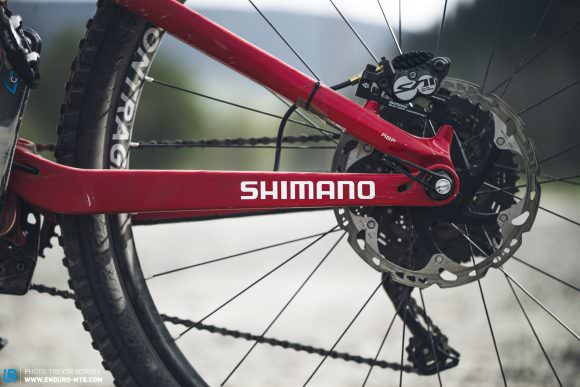
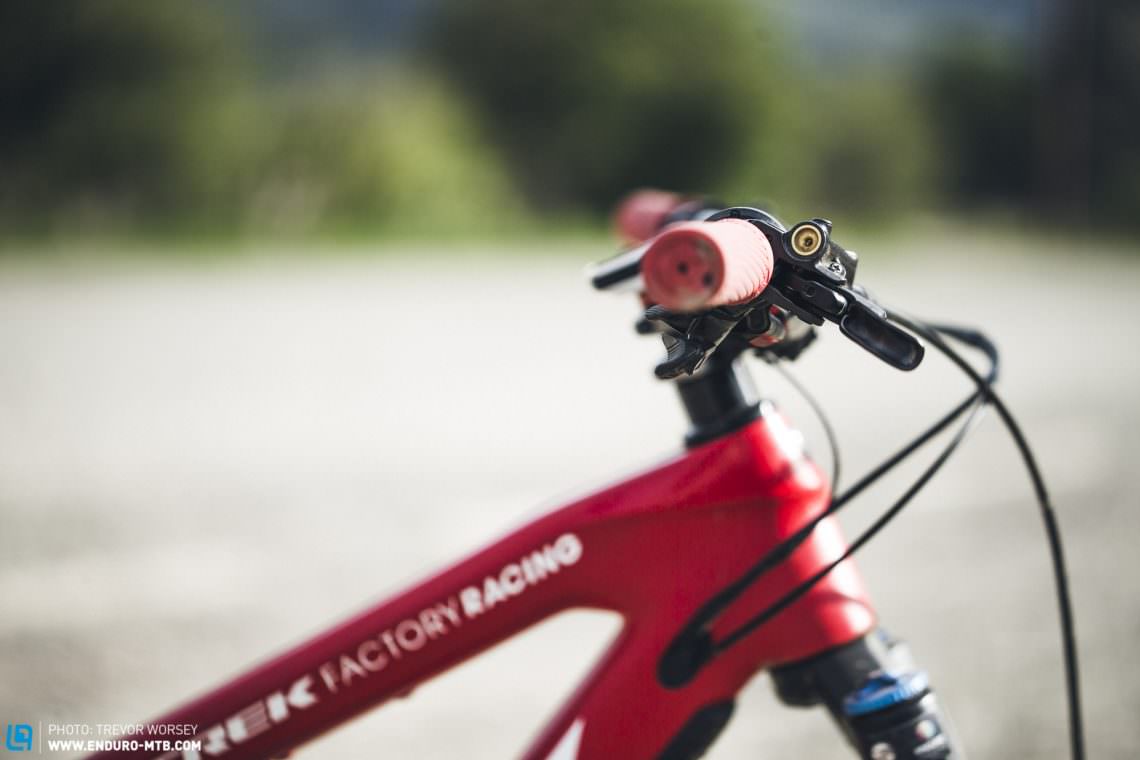
A high bar height is a necessity
“After my crash last year I do not have full movement of my elbow, as such I need to run the bars a little closer to me, so I always try and max out the bar height as much as possible.” With a 20 mm riser bar, Lewis also runs 20 mm of spacers under the 35 mm stem. “I used to run 30 mm of spacers which are the maximum I can fit in, but I am trying to push my range of motion a little so am now down to 20 mm.”
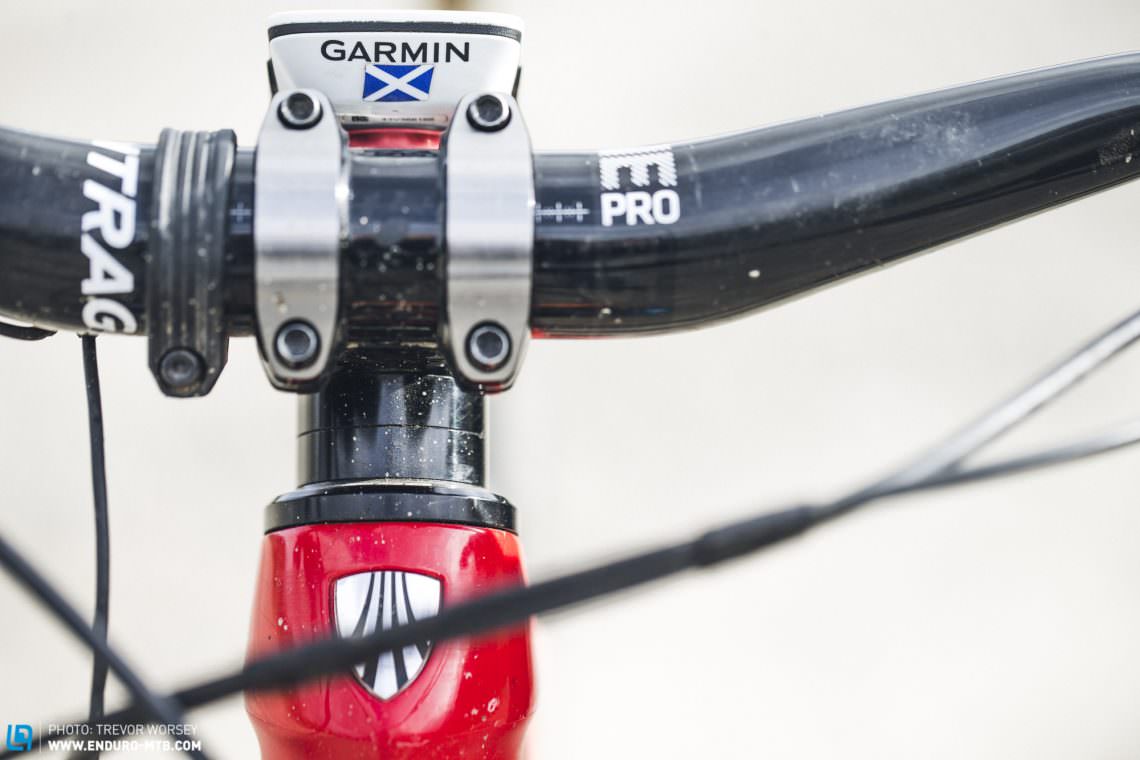
Suspension setup, not for mortals.
At 76 kg Lewis runs a firm racers tune, soft at the start but ramping up firmly with lots of high-speed compression. Being honest, Lewis admits that the internals of his fork have been tuned for his riding style, so his setup is largely defined by the voodoo that the FOX engineers have worked. Lewis runs the latest FOX EVOL 36 in team racer orange, and he has a base setup of 75 psi, with 15 clicks of LSC. Lewis runs lots of high-speed compression for the fast hits, just 1 click from closed, and runs a very fast fork with the rebound set at 8. All settings are from fully closed. “I have been super impressed with the reliability of the new fork, I get a fresh service and oil change before every big race, but to be honest, it never needs it”. The rear FOX X2 shock has also been tuned specifically for Lewis, running 190 psi, with 18 clicks of HSR and HSC, and 11 clicks of LSR and 5 clicks of LSC. Some time ago we gained exclusive behind the scenes access to a quiet Trek Factory Racing test session.
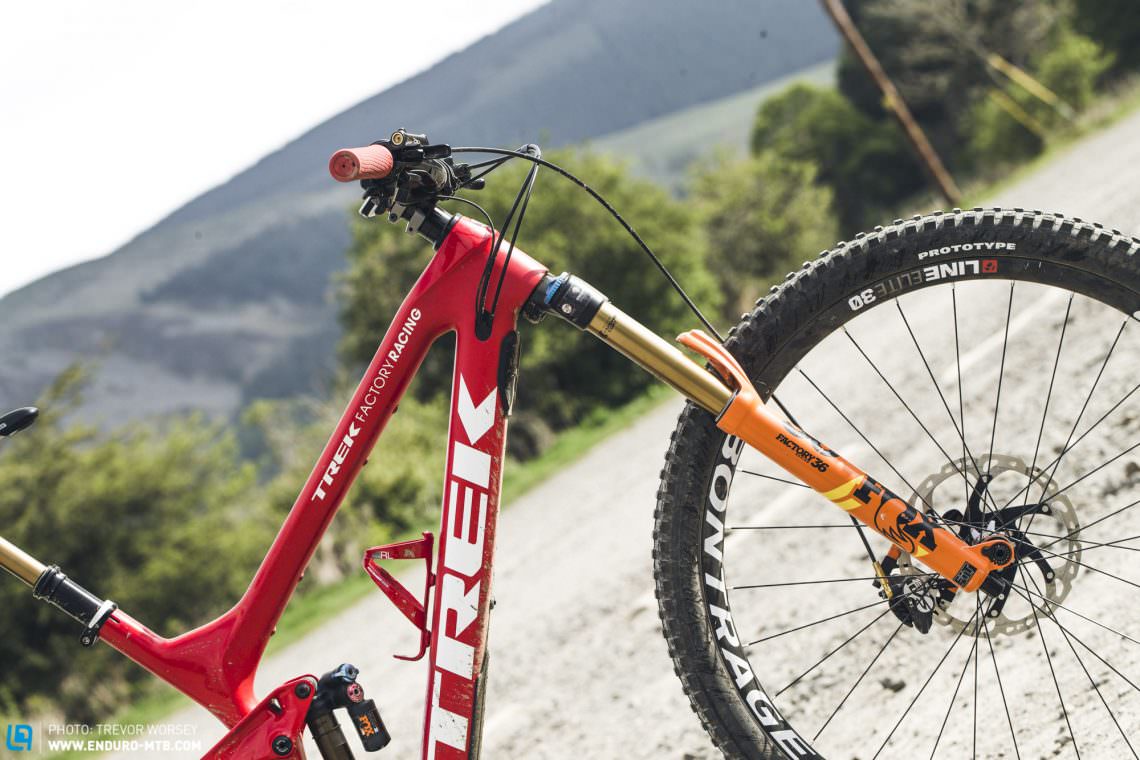
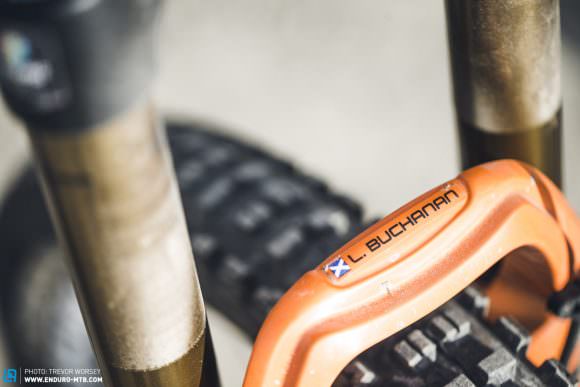

Can you tell us about your tyres? No!
Trek Factory Racing take feedback from their racers very seriously, and if you want to know what’s coming in 2018-19, you need only look on the team bikes. True to form, Lewis is running ‘prototype’ Bontrager tyres, and would not tell me anything about them. Only that they are running 22.6 Psi in the front and 26.0 Psi in the rear and they appear to have a new sidewall. Lewis will drop the pressures a few Psi if it’s really muddy or maximum traction is needed, but not too far. When racing in rocky locations where a puncture is likely, Lewis will run a Flat Tyre Defender in the rear so he can finish a stage with a flat. “I really like the way the FTD holds the bead on the rim, making it easy to ride out of a stage.”
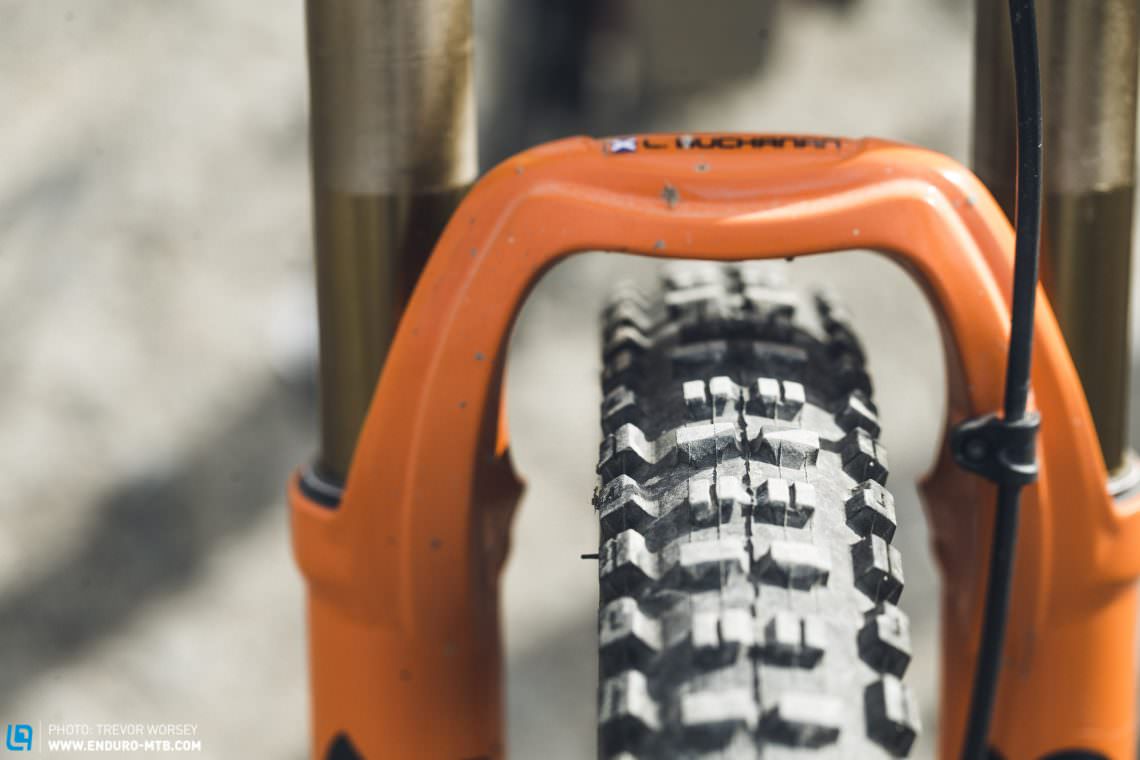

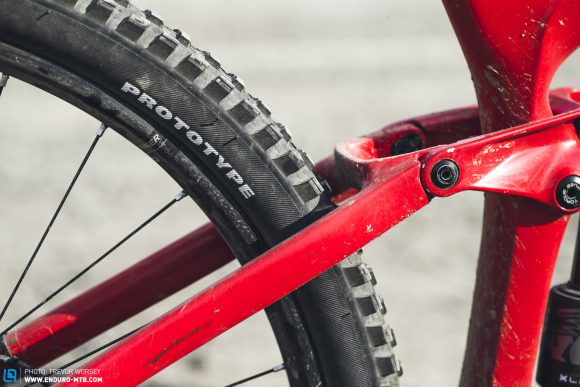
Bar width, not as wide as you may think
“I cut my bars down to 740 mm, which I guess is pretty narrow compared to some. I do see many people moving to narrower bars these days. A few years back we were all going as wide as possible, but now I see many riders experimenting with a more conventional size. 740 mm works great for me and is far better in the tight trees.”
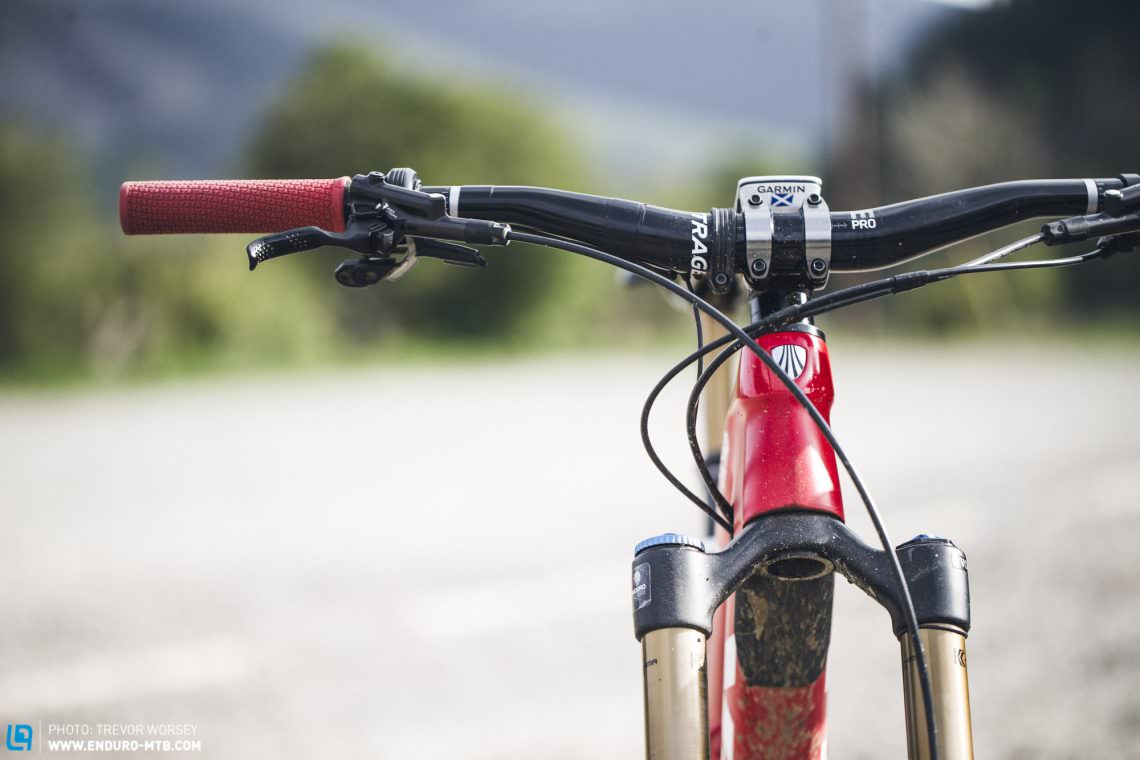
Aluminum not carbon.
Surprisingly, Lewis opts for the affordable 28 mm internal Bontrager Line Elite 30 wheelset. Even with access to carbon rims, he is firmly in the aluminium camp. “I have no problem with carbon rims, but I have always preferred aluminium, if you take a big hit they tend to fail less catastrophically and giving me more chance of finishing a stage, or nursing them round the rest of the race.” It’s nice to see a pro-rider using rims that do not cost more than most people’s bikes.

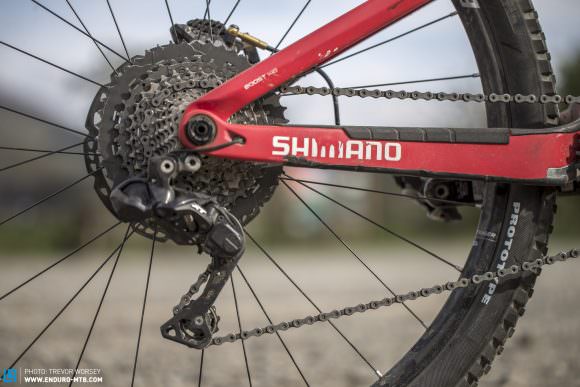



Read more about the stock bike in our Trek Slash First Look. We’ve also sat down with Lewis for an interview at the beginning of the season.
Did you enjoy this article? If so, we would be stoked if you decide to support us with a monthly contribution. By becoming a supporter of ENDURO, you will help secure a sustainable future for high-quality mountain bike journalism. Click here to learn more.
Words & Photos:








